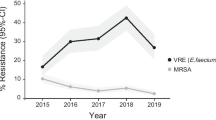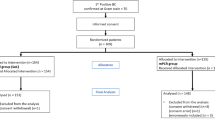Abstract
For patients with bloodstream infections, rapid initiation of the appropriate antimicrobial therapy is essential in reducing mortality and morbidity. New developments and automation in clinical microbiology labs speed up the identification and susceptibility results but are expensive. To gain insight in the added value of the new workflows, we simulated the possible impact of rapid identification and susceptibility tests on a real-life cohort of 158 positive blood culture episodes. Our routine workflow was theoretically challenged against two new workflows, one based on rapid identification with MALDI-TOF MS and one based on molecular testing. First, we observed an important role of the rapid communication of the gram stain results, as about one third of patients needed an adaptation of the antimicrobial therapy based on these results. Antibiotic adaptation based on the microorganism identification was necessary in 10% and in another 25% of cases after the availability of the susceptibility results. The added value of the newer workflow methods lies mainly in the field of the rapid identification and was rather limited in our cohort. In conclusion, for optimizing the blood culture workflow, each microbiology lab should critically scan its own workflow and know its own blood culture epidemiology, before investing in expensive or time-consuming processes.





Similar content being viewed by others
References
Opota O, Croxatto A, Prod’hom G, Greub G (2015) Blood culture-based diagnosis of bacteraemia: state of the art. CMI 21(4):313–322
Trenholme GM, Kaplan RL, Karakusis PH, Stine T, Fuhrer J, Landau W, Levin S (1989) Clinical impact of rapid identification and susceptibility testing of bacterial blood culture isolates. J Clin Microbiol 27:1342–1345
Kumar A, Roberts D, Wood KE, Light B, Parrilo JE, Sharma S, Suppes R, Feinstein D, Zanotti S, Taiberg L, Gurka D, Kumar A, Cheang M (2006) Duration of hypotension before initiation of effective antimicrobial therapy is the critical determinant of survival in human septic shock. Crit Care Med 34:1589–1596
Barenfanger J, Graham DR, Kolluri L, Sangwan G, Lawhorn J, Drake CA, Verhulst SJ, Peterson R, Moja LB, Ertmoed MM, Moja AB, Shevlin DW, Vautrain R, Callahan CD (2008) Decreased mortality associated with prompt Gram staining of blood cultures. Am J Clin Pathol 130:870–876
Christner M, Rohde H et al (2010) Rapid identification of bacteria from positive blood culture bottles by use of matrix-assisted laser desorption-ionization time of flight mass spectrometry fingerprinting. J Clin Microbiol 48(5):1584–1591
Doern GV, Scott DR, Rashad AL (1982) Clinical impact of rapid antimicrobial susceptibility testing of blood culture isolates. Antimicrob Agents Chemother 21(6):1023–1024
Scarsi KK, Feinglass JM, Scheetz MH, Postelnick MJ, Bolon MK, Noskin GA (2006) Impact of inactive empiric antimicrobial therapy on inpatient mortality and length of stay. Antimicrob Agents Chemother 50(10):3355–3360
Huang AM, Newton D, Kunapuli A, Gandhi TN, Washer LL, Isip J, Collins CD, Nagel JL (2013) Impact of rapid organism identification via Matrix-Assisted Laser Desorption/Ionization Time-of-Flight combined with antimicrobial stewardship team intervention in adult patients with bacteremia and candidemia. CID 57:1237–1245
MacVane SH, Nolte FS (2016) Benefits of adding a rapid PCR-based blood culture identification panel to an established antimicrobial stewardship program. JCM 54(10):2455–2463
Perez KK, Olsen RJ, Musick WL, Cernoch PL, Davis JR, Peterson LE, Musser JM (2014) Integrating rapid diagnostics and antimicrobial stewardship improves outcomes in patients with antibiotic-resistant Gram-negative bacteremia. J of Infection 69:216–225
Author information
Authors and Affiliations
Corresponding author
Ethics declarations
Conflict of interest
The authors declare that they have no conflict of interest.
Ethical approval
Ethical approval was obtained from the local Medical Ethics Committee (B670201524756).
Informed consent
Not obtained. This is a retrospective registration study.
Rights and permissions
About this article
Cite this article
Cattoir, L., Coorevits, L., Leroux-Roels, I. et al. Improving timelines in reporting results from positive blood cultures: simulation of impact of rapid identification on therapy on a real-life cohort. Eur J Clin Microbiol Infect Dis 37, 2253–2260 (2018). https://doi.org/10.1007/s10096-018-3366-8
Received:
Accepted:
Published:
Issue Date:
DOI: https://doi.org/10.1007/s10096-018-3366-8




